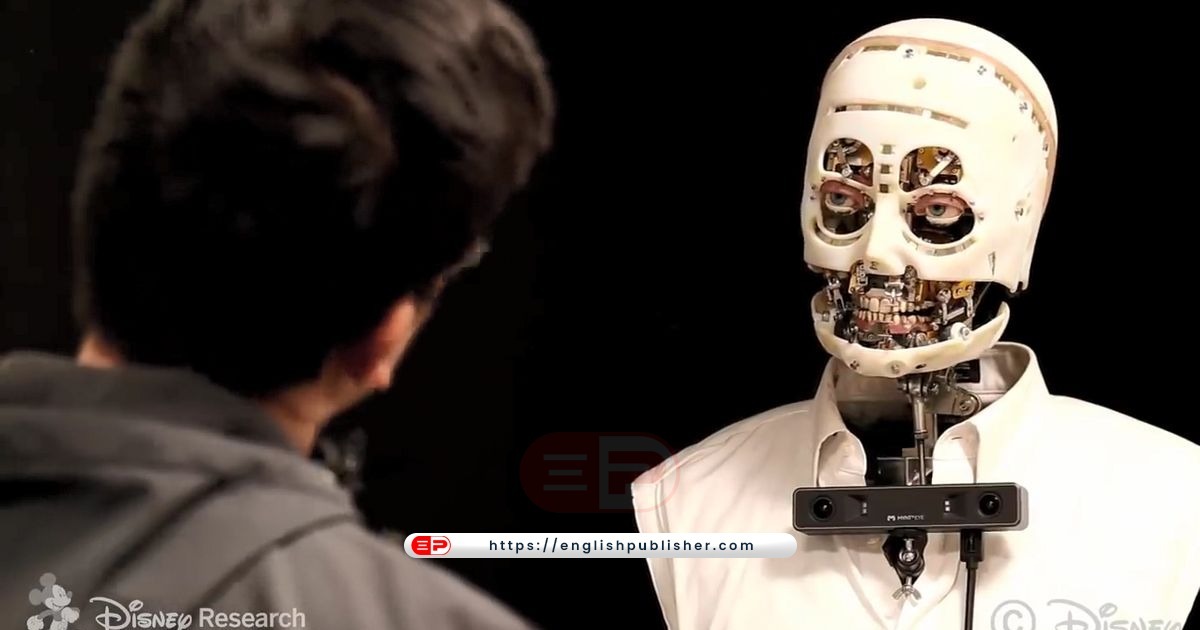This is my first session with a robot where we have to play drums. On a table next to me sits the human-like robot ‘I Kab’. We both have our own sticks and boxes. We have to make a tune by hitting the stick on the box.
Obviously I’m looking at the robot and I know it’s looking at me.
This drumming experiment revolves around testing how human behavior is affected when performing a task in the presence of a robot.
These experiments based on human-robot interactions were conducted by the research group Contact (Cognitive Architecture for Collaborative Technologies) at the Italian Institute of Technology in Genoa, Italy.
Even though I know there are lights and other people in the room, my gaze falls on Kab’s big eyes. Every time after a few seconds the robot blinks and makes a strange sound. This expensive but child-like robot has big eyes and is hard to ignore.
A robot’s deep gaze and blink pattern is not such a simple process.
“It’s often assumed that blinking is just a reflex to conserve moisture and movement in the eye,” says psychologist Helena Kluvri at the University of Tampere in Finland. But it also plays an important role in bilateral relations.
Blinking by humans conveys attention and emotion. It is a form of non-verbal communication and it conveys many things that we are not consciously aware of. We get information and comfort from the blink of an eye.
That is why experts working in the field of robotics are trying to understand the physiological and psychological properties of blinking so that it can be used in robots.
According to Helena Clovery, “Because of the importance of blinking in human behavior, it is assumed that if a robot blinks, it will be liked by humans.” This can help improve communication between humans and robots.
David Hansen, head of Hansen Robotics, says that when a robot blinks properly, people understand its role.
A study of thirteen-year-olds to adults in Italy showed that both children and adults preferred robots that blinked. According to researcher Alessandra Scutti, a robot that doesn’t blink dislikes being stared at.
Humans also perceive robots that blink naturally as more intelligent. Robots that provide information, such as at a train station, have an important impression of intelligence.
But making a robot blink naturally can be technically challenging.
“The human blink is a delicate act,” says Helena Clovery. Replicating this movement requires advanced technology, such as high-precision motors.’
Specialists at Engineered Arts use aerospace-grade motors for this task and design their own control electronics.
“It can be difficult to determine motor speed between blinks,” says Mr. Hansen of Hansen Robotics. And making the eye look natural during this process is also challenging. Also reducing the friction between the artificial eyelashes and the surface of the eye.
Artificial blinking also has to consider speed and sound. Contact’s senior technician Francesco Re says that the silent motor in the iCub robot can reduce the sound of blinking. But slowly the robot will fall asleep or look like a cat.
Blinking at a slow speed can lose visual information because the Eye Cub’s camera is hidden behind the eye. According to Ray, ‘losing two frames in view is not such a big deal. But losing ten frames can be a problem.
“The timing and duration of the blink is also a big challenge,” says Helena Clovery. Blinking has important things to do with how it changes when lying. It involves blink factors and different forms of emotion.’
“In any context, a deviation from a natural and appropriate blinking by a robot can seem strange and disturbing.”
The Contact team uses a software program that randomly blinks once and twice. Otherwise it won’t feel natural with training.
Character animators in Disney Research’s robotics department are experimenting with ways to make it feel natural for a robot to look at someone. Its purpose is to control the non-verbal message sending system with the eyes.
“We’ll be able to assess these behaviors and identify all the little nuances and details,” says James Kennedy, a researcher at Disney Research.
He has also received a patent for his inventions related to robot eyes. This includes software for analyzing images from a camera mounted on the robot’s chest, and generating control signals for eyelid opening and closing.
Kennedy says the research is still experimental and has not yet been tested at Disney’s theme parks. According to him, the aim is to make the robots’ movements more realistic and improve their interactions with humans.
There is room for further improvements in the technology, such as when interacting with humans it shouldn’t seem like robots are staring. Just like human interaction, robots have to coordinate their blinking with humans.
According to Kennedy, when replicating this system in a robot, the researchers found that this complex process involves delicate movements.
“In this case we have a great opportunity for discovery and invention.”
